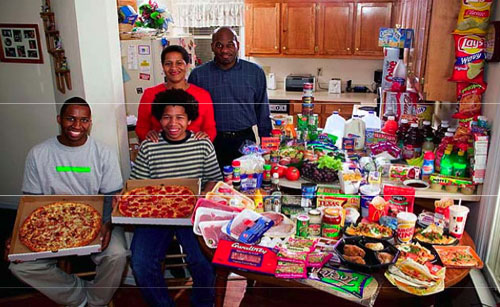
When cacáo first left its American homeland to eventually circumnavigate the globe, the original shipments took route across the Pacific to Asia, then Oceania, carrying prime Criollo from Mesoamerica. On the Transatlantic side of trade, Africa received the more humble stocks of Amazon cacáo. Premium varietals have only slowly crept into its limited crop diversity. And in a bit of perverse justice, the mother continent from which millions were herded onto slave ships to pick cotton, sugarcane, & cacáo all over the Caribbean & the Americas, is now the world’s largest producer, making it the buckle of the cocoa-belt that wraps around the equatorial “20/20 Zone”.
Catastrophe looms ahead, however, as recent drought & generally drier conditions in Africa stresses cacáo trees that require considerable moisture, coupled with the decades-old CSSV (Cocoa Swollen Shoot Virus) rearing its mealybug head, the insect that transmits it. Symptoms include yellow leaf veins plus swollen stems & roots, & eventual death of the tree.
The industrial giants that rely on Africa’s bumper crops for the cheap abundance it supplies to their chocolate-flavored candies are betting that speed-breeding will come to the rescue with miracle seeds sprouting trees that bear traits for high-yield, drought-tolerance & disease resistance in tandem with, even more remarkably, sustainable agriculture. Howard Shapiro who has headed up plant science at Mars: “If we can treble the yield of cacao, farmers can tear up two-thirds of their lowest-yielding trees & use the land to grow fruit & timber”. Besides giving cacáo the shade it likes, growing other tree crops alongside shifts it from a system of petroleum-based fertilizers to a mix of nitrogen-fixing plant-mates that help reduce susceptibility to disease, giving farmers harvests year-round &, theoretically, prosperity to abandon a kind of ‘slash-&-burn’ technique on land that soon enough becomes depleted, forcing growers to move on to clear more forest, planting more cacáo, & the cycle repeats continually in a vicious loop
 Deforestation in Africa (photo by Jean-Claude Péclet)
Deforestation in Africa (photo by Jean-Claude Péclet)
This points up a wider & larger issue: humans by nature are born breeders raised to be consumers who produce waste as by-product.
Agriculture across the globe currently absorbs nearly 70% of all freshwater used by us, & 40% of the Earth’s land (& virtually all arable land) with the attendant casualties to topsoil & biodiversity. Rain fed topographies alone simply won’t cut it. They fall short & are hardly enough when the crux of the matter projects by mid century that food production must increase 50% to meet rising population demands for a planet slated to reach 9.5 billion people — each destined to eat on average 35 tons in their lifetime.
 What the World Eats — One Family in One Week (from Hungry Planet, 2005)
What the World Eats — One Family in One Week (from Hungry Planet, 2005)
Superfreakonomics, by Steve Levitt, puts the kibosh on PC speech codes that inveigh against anyone who dissents from conventionally-held views toward global warming, sustainability, cap-&-trade legislation, Kyoto accords, etc., proclaiming that those approaches are both counterproductive & expensive. Levitt’s solution: we have to invent our way thru.
The current suite of technologies includes –
GMO – a sensitive topic for consumers;
Maximized Yields – thru the aid of DNA markers;
Agronomic management …
GPS applied to IT – planting in the right places
Reduction in tillage to lessen soil erosion
Irrigation systems
Improved Machinery
The dilemma pits organic vs. biotech, & consumption vs. productivity: either bring more acres into production & the environmental consequences that ensue, or increase the productivity & efficiency of current acreage. The latter redefines sustainability as the ability to produce more – much more – on the same or better yet less acreage.
Depending how it all plays out in actuality, this may put consumers & corporations at odds with each other. Despite CSR programs (Corporate Social Responsibility) & greenwashing campaigns (think BP TV ads pre-Spill), many corporations in truth view the term ‘sustainable’ quite literally, meaning the ‘ability to last over time’, & what that entails merely in a constricted sense for capacity & long-term revenues. Consumers widen the concept to incorporate ‘eco-green’, ‘natural’, ‘conservation’, ‘health’, ‘socially responsible’ / ‘commercially ethical’, etc… generalized as common welfare & good global citizenship.
 Yum, the hand that feeds… roots of the new farm
Yum, the hand that feeds… roots of the new farm




